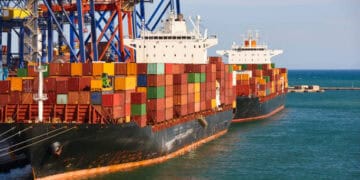Recent developments in the Red Sea have led to significant changes in ocean shipping operations, with carriers rerouting their vessels to avoid the area. This shift has resulted in longer transit times and higher operational costs, as alternative routes like the Cape of Good Hope are being utilized.
Freightos, a freight rate benchmarking platform, reported that the rates from Asia to the U.S. East Coast experienced a 52% increase to $3,900 per Forty-Foot Equivalent Unit (FEU) as of January 3, compared to the rates before the diversion announcements. Additionally, rates from Asia to the Mediterranean have more than doubled since January 2019. Shipping company CMA CGM has announced that starting January 15, rates on this trade lane will exceed $6,000/FEU.
Despite these increases, several industry sources suggest that carriers are better equipped to handle such disruptions now, unlike during the pandemic. This improved capacity to manage disruptions may help in controlling the spike in rates.
The current trend of increasing freight rates is not expected to be a long-term phenomenon, as indicated in the January 2024 Container Market Forecast by Container xChange. This forecast, compiled from surveys of shipping professionals in December 2023, points to a supply and demand imbalance and no significant signs of market revival.
Christian Roeloffs, CEO and co-founder of Container xChange, in his analysis dated December 20, raised critical questions about the industry’s future. He pondered whether the current situation in the Red Sea is a temporary disturbance or a more prolonged issue, especially considering the added strain from the diversion of container vessels around the southern tip of Africa and the limited accessibility of the Suez Canal.
According to Linerlytica, a maritime data analysis firm, the ongoing crisis in the Red Sea is expected to keep freight rates elevated at least through February.
Stay on top of supply chain logistics news updates at The Supply Chain Report. Visit ADAMftd.com for free international trade tools.
#RedSeaShipping #FreightRates #OceanShipping #LogisticsUpdate #MaritimeIndustry #SupplyChainChallenges #ContainerShipping #ShippingRates #GlobalTrade #SuezCanal #CMA_CGM #Freightos #ContainerXChange #Linerlytica #CapeOfGoodHope













